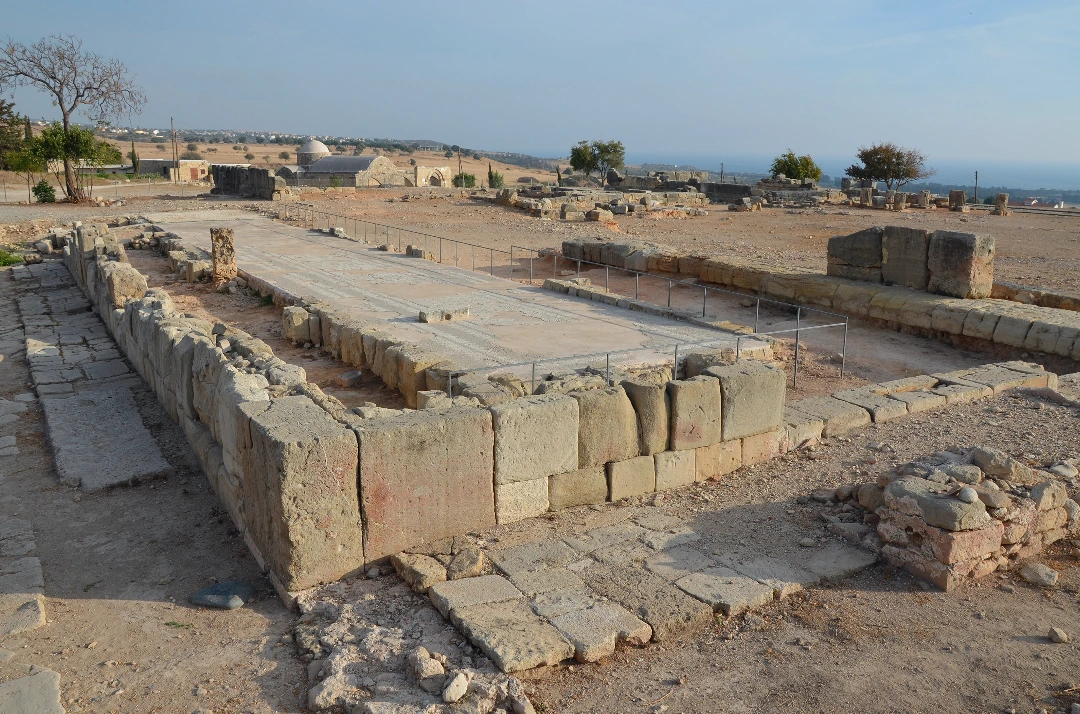The Sanctuary of Aphrodite is situated in the village of Kouklia in Paphos. It dates back to the 12th century B.C. but it’s glory days have been over since the 4th century and all is left now are ruins of what was once one of the most sacred pilgrimage centres of the ancient Greek world. The Sanctuary of Aphrodite served the people as a place of adoration for the goddess of love and beauty for hundreds of years until the arrival of Christianity. In the adjoining museum, housed in the Lusignan Manor, one can find several interesting artefacts unearthed from this area. Excavations are still ongoing on the site of the sanctuary, the city and the necropolis.
The residents of Kouklia and the surrounding region of Palaepaphos, started worshipping the goddess of fertility as far back as around 3900-2500 B.C. The goddess of fertility protected life and they depicted her as a pregnant woman. Stone and clay figurines were modelled in her honour as objects of adoration, to be worn as amulets or to be placed in graves to protect the dead. In the 12th century B.C., the Paphians as well as the Greeks became more and more impressed by the magnitude of the goddess of fertility and a big ornate holy altar was built dedicated to her. It is unclear exactly who originally built this shrine and its building has been attributed to King Kinyras and Agapinor, King of Tegea and Arcadia, after the Trojan War. Nevertheless, instead of building the traditional temple for the goddess, the altar was built in open air and encircled by walls which according to Homer were fit with brightly coloured doors. Although the site today remains in ruins, part of this altar is still standing. The goddess was not worshipped in the form of a statue but rather in the shape of a conical stone. This stone was discovered next to the altar and is still kept in the Kouklia Museum. It is thought that the stone was always kept veiled and no one was permitted to look at it since it was believed to be miraculous. A holy garden is also likely to have made part of the sanctuary after which the nearby village of Yeroskipou was named.
Various ceremonies and rituals were carried out in honour of the goddess Aphrodite, but the most important of all was the spring festival of ‘Afrodisia’. This festival attracted people from all over Cyprus and the ancient world. Afrodisia was an annual event which lasted for four days. Pilgrims congregated at Yeroskipou and Achni and together they all headed towards the shrine. Separate processions of garlanded men and women made their way to the shrine. Festivities consisted of music, poetry, athletic contests and sacrifices to the goddess while the priests issued their oracles. Some of these rituals survive in the modern spring flower festival of Anthistiria and the flood festival of Kataklysmos in June. Participants of the Kataklysmos festival are obliged to plunge into the sea in a seemingly commemoration of the birth of Aphrodite and her emergence from the waves believed to have occured in Petra Tou Romiou, Paphos.
The arrival of the Romans and the need of extensive repairs to the temple after the various earthquakes that hit the region, have changed the original arrangements of the temple and little has remained from the original structure which was once one of the most frequented temples of antiquity.






